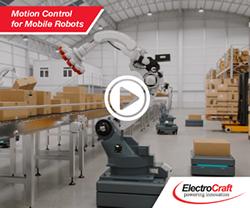Five Elements Robotics Announces the Launch of Dash, the Robotic Shopping Cart
The Aggressively Flying Quadrotor
Robotics Veteran Raises Venture Capital to Build Exoskeleton
Endeavor Robotics Submits Proposal Response as Prime System Integrator (PSI) for the Advanced Explosive Ordnance Disposal Robotic System (AEODRS) Increments 2 & 3
Bodkin Design Unveils Unique Snapshot Hyperspectral Products Through Exclusive Partnership With Cubert
Gobot Makes Internet of Things Development Both Easy And Powerful
Result of the 2016 TraceParts annual competition
LiDAR 101: A Q&A with a Pictometry Expert
An Open Source Driving Agent from comma.ai
Final Dates Set for Major International Robotics Challenge in the United Arab Emirates
Optelos Launches Turnkey Solution for Drone Workflow, Solving Key Challenges Holding Back Drone Rrograms
AutonomouStuff and NEXCOM Pave the "Road to Autonomy"
Future Drones Will Fly as Silent as Owls, as Steady as Bees
DIY Position Tracking Using HTC Vive's Lighthouse
Was That an Insect or a Drone?
Records 4306 to 4320 of 6805
First | Previous | Next | Last
Featured Product

